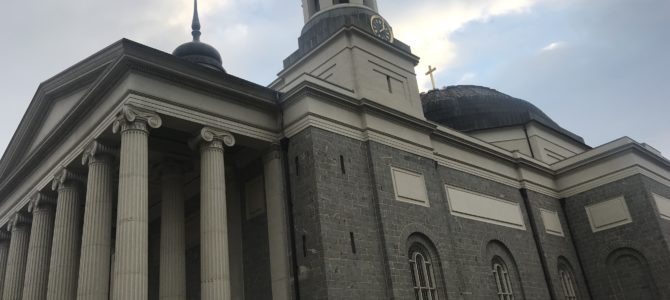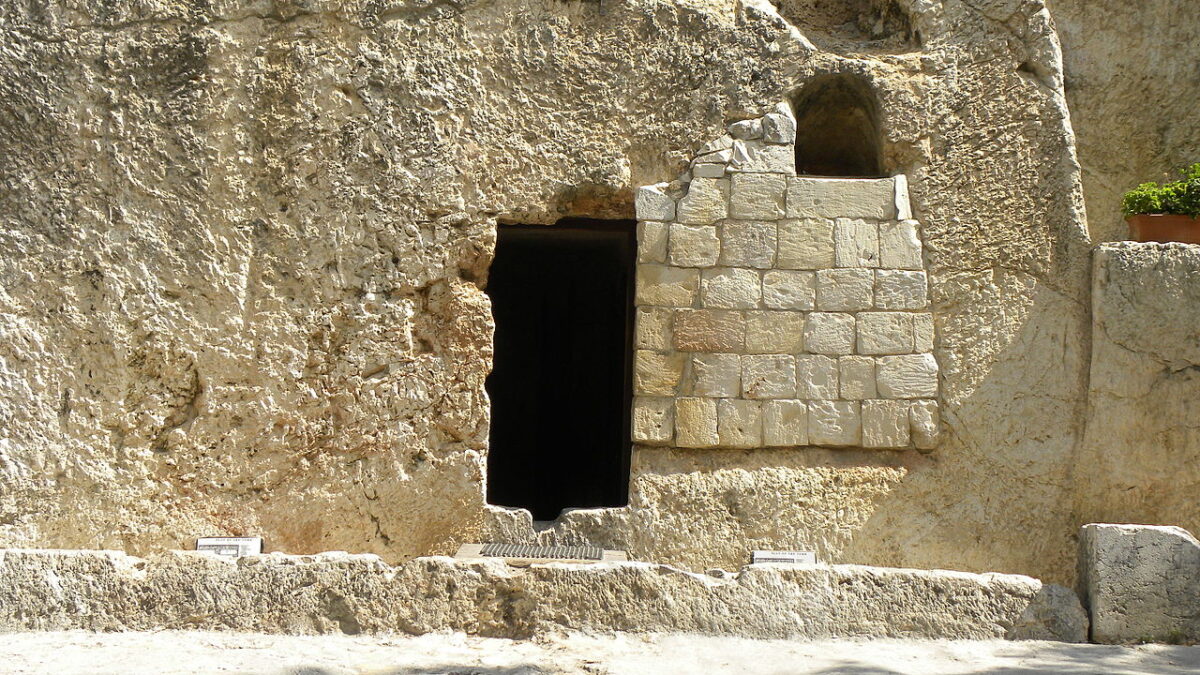
By happenstance, the morning of this New Year’s Eve I awoke in a very nice hotel in Baltimore. The night before, walking back from a bite at a bar on Charles Street, I walked past the Baltimore Basilica, just a block from my lodgings. Curious, I Wiki’d it. As someone who thinks of himself as a proud American and a proud Catholic, I felt ashamed at not having known that this was the first cathedral in the United States. To atone for my ignorance, I committed myself to attending the 7:30 Mass the next morning.
The basilica, more formally known as The Basilica of the National Shrine of the Assumption of the Blessed Virgin Mary, was designed by Benjamin Henry Latrobe. The father of American architecture, he was friends with Thomas Jefferson and helped to designed a little building down the road in Washington DC called the U.S. Capitol.
There are similarities to the two buildings, although Latrobe’s capitol looked quite different from ours today. The original capitol and the basilica both express a profound mastery of scale. Anybody can build a big building, but to make a building that is big yet seems to comfortably exist in its own size is a challenge. Neither a lanky nor obese teenager, both buildings express an exquisite and adult form.
I had been looking forward to Mass in the grand upstairs space that I had seen pictures of. I have always been one of those Catholics who takes my faith with an extra two lumps of grandeur. But after crushing my cigarette ‘neath shoe on the sidewalk before the columned entrance, I found the doors to the upstairs church locked. A sign informed me that Mass would take place in the downstairs chapel.
Fair enough; it was 7:30 on a Tuesday morning. This isn’t 1923, there weren’t going to be 1,000 Catholic immigrants fighting for seats. I asked a very kindly older woman, whom I did not blame for looking at me suspiciously, where the chapel was. I followed her down some stairs, into a low ceiling of brick façade, mesmerizing like a curvy print from M.C. Escher.

We walked down a long corridor to a small area, with a small altar, surrounded by candles, no natural light penetrating, where a small group of maybe 12 of us sat to await the word of the Lord. Thanks be to God.
What was brought to mind through the readings and homily was the humble beginnings of Jesus’ ministry. Hiding in basements, as we were, a most unlikely tribe that almost 2,000 years later would erect stone magnificence on a continent they did not know existed, offered their humble prayer and sacrifice.
I stared at the bricks, wondering how many had been laid by slaves; thinking about the foundations of magisterial beauty, how often they betray that which they support. We sat in chairs, not pews, no padded kneelers. When the time came to kneel, we knelt on the cold stone floor, each moment biting through the knees, the physical pain that colors so much of the Catholic Church. When the Mass had ended we went in peace, and as I reached the top of the stairs, the upper church was no longer locked.

It is an incredible physical space, brighter and whiter than most American Catholic cathedrals. At St. Patrick’s in New York, or Peter and Paul in Philadelphia, you are in the cold, damp, old world land of incense and whisping smoke. Here light flowed. I almost felt too exposed to be pious. So high was the dome that I thought I heard a faint echo of my gentle genuflections.
I lit a few candles and then just marveled at what surrounded me. But I also held myself lucky that Mass had been downstairs. It is very common for big East Coast Catholic churches to have a smaller, less ornate church space in the basement. I’d never really thought about the implications.
The fabulous spectacle of the vaulted church contains promise, hope, in some sense an argument that if mere humans can create such an environment what wonders must await us in the kingdom of the Lord? But in the bowels of that beauty real life takes place. In the quiet corners we mourn, and wonder, and sometimes beg.
When I left, around 9 a.m.I didn’t quite know what to do with myself. I was in town with a buddy who habitually sleeps until noon and wouldn’t stir from his room until then. I wandered, old Federal short stack red brick all around me that reminded me so much of my native Philadelphia. I saw statues, monuments, stone and metal markers of a time when we were proud of our ancestors and ourselves.
And I realized I am proud of the basilica in Baltimore, even though my only association with it is having been to Mass there once, and writing this article. When I travel, across the globe there is always a Catholic church, always a Mass to attend. This experience was not as exotic as taking communion in Buenos Aires or Warsaw, but it was uniquely American. As the sun set on the decade, there was nowhere I would rather have been.









